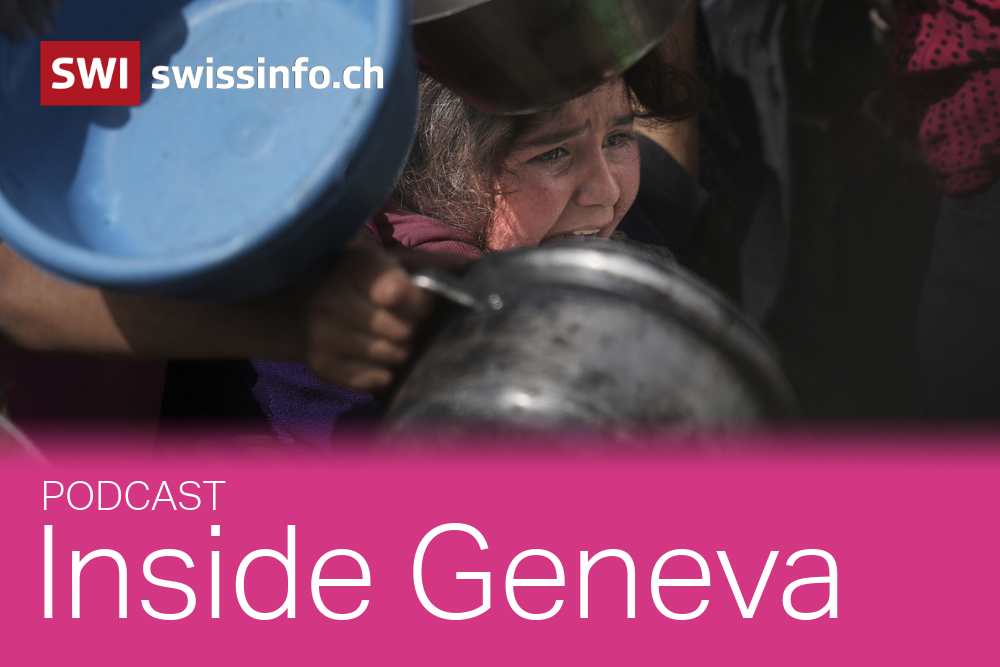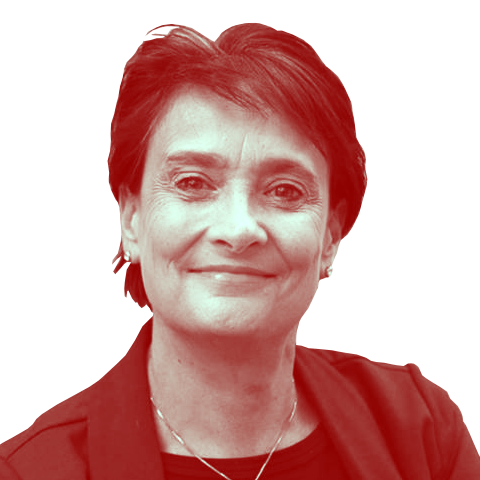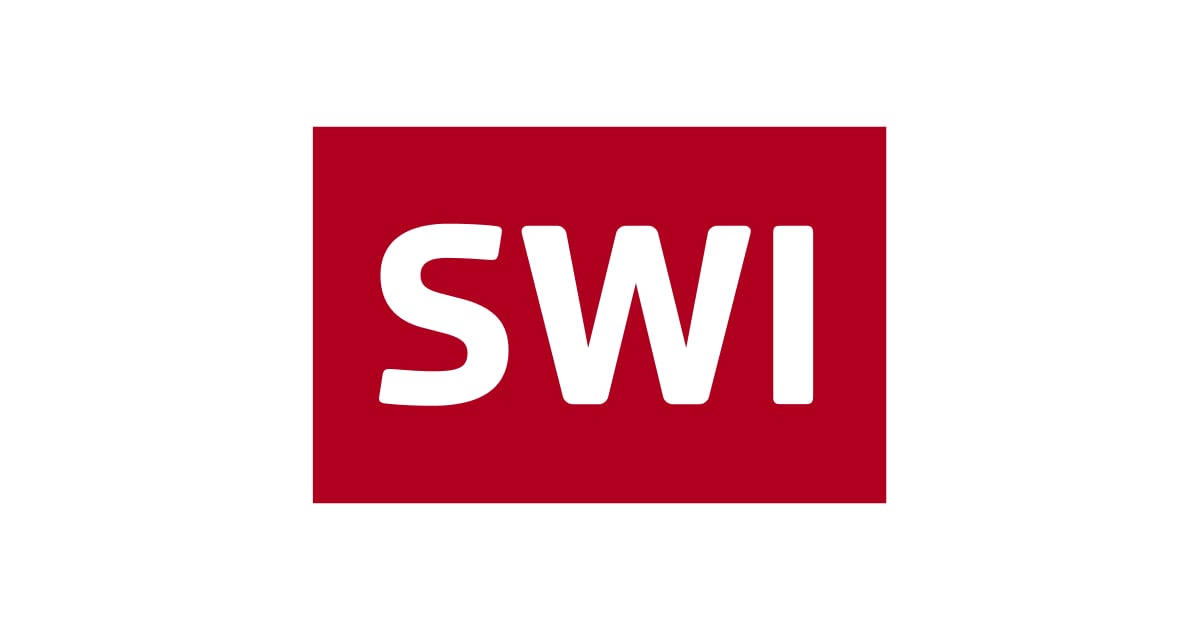
Summer profile: Rachael Cummings, humanitarian director, Save the Children, Gaza
The pictures from Gaza of starving children and desperate struggles for food have shocked the world. In Geneva’s humanitarian community there is shock too, but no surprise.
Aid agencies have been warning for months that the trickle of aid – coming after a 10 week total blockade – allowed into the strip would trigger insecurity, possible violence and eventually, starvation.
Aid agencies have already seen enough shocking things to last a lifetime: the acronym WCNSF adopted by health workers as the bombing in Gaza intensified stands for Wounded Child, No Surviving Family. The grim statistic that just ten weeks into this war, 1,000 children had lost one or both legs.
International media are not allowed into Gaza, so the testimony of aid workers, who remain there despite the huge challenges, is very important. This week on Inside Geneva, we talk to Rachael Cummings, humanitarian director for Save the Children, who has been working in Gaza since just after the conflict began.
Cummings started life as a nurse, in part because nursing was in her family, and she was attracted to professions which involved “empathy and communication”. But she also thought it might give her a chance to travel. She certainly wasn’t wrong about that.

More
Inside Geneva’s Summer Profiles: Rachael Cummings in Gaza
From Cambodia to Sierra Leone
Trained in Britain’s national health service, her first foreign posting was as a nursing tutor in Cambodia. That, she told Inside Geneva “really opened my eyes to the humanitarian sector.” From there, in the immediate aftermath of the Asian tsunami in 2004, she went to Banda Aceh in Indonesia, “which was a massive, massive learning curve, but also instrumental in setting me on this path for humanitarian work,” although, she adds that she was “completely naïve” about the humanitarian system at the time.
Cummings stayed in Banda Aceh for a year and a half. The Asian tsunami was the biggest natural disaster in centuries. United Nations aid agencies mobilised quickly but it is now recognised that they were not as efficient and organised as they needed to be. Lessons were learned, and we can assume Rachael was no longer naïve by the time that year and a half was over.
Later postings included the Ebola crisis in Sierra Leone, where Save the Children was tasked with setting up an 80 bed treatment centre. Cummings remembers that as “so outside of Save the Children’s comfort zone. We had not been providing frontline clinical care in infectious disease outbreak ever before.”

More
Inside Geneva: the failed militarization of humanitarian relief in Gaza
But the centre was successfully built and that posting is one Cummings remains very proud of. Another was a posting to Cox’s Bazaar in Bangladesh in 2017. In the space of weeks, a million Rohingya Muslims fled violence in Myanmar, an event she describes as “biblical”. There, Save the Children created learning programmes, schools, and health centres.
The refugees have not been able to return home yet and Cummings takes comfort from the fact that “the foundations that we built, the health centres that we built, the learning, education, are all still functioning.”
Gaza
When the war in Gaza started, Cummings knew immediately that that is where she wanted to be. She admits that such situations bring out the best of her skills, “I know what I’m good at, I know where I become very energised and motivated, and it’s very much working in these environments.”
Save the Children, like all established aid agencies in Gaza, works within the UN system, and is dependent on the UN logistics cluster for the movement of its supplies. So when UN trucks are blocked, Save the Children’s supplies are blocked too. Nevertheless, Cummings and her team are running two primary health care centres in Gaza, 10 nutrition centres, providing education across 16 communities, and even trucking water to them.
“Our standards do not drop just because it’s hard,” she told me. “I always say, anything is possible in Gaza. It’s just bloody difficult.”
But she admits that, now it’s more difficult than ever. Cummings joined Inside Geneva from her office in Deir al Balah in central Gaza, which has become the hub for many aid agencies. Just days after I talked to her, Israel launched ground operations in Deir, the World Health Organisation’s premises were bombed, and according to the WHO, its “male staff and family members were handcuffed, stripped, interrogated on the spot, and screened at gunpoint.”
Gaza is now the most dangerous place on earth to be an aid worker or a journalist. But it is also the most dangerous place on earth to be a child. They face constant displacement, bombing and now starvation. Cummings, who has a 10 year old son, says Gazans, watching their children go hungry will do anything to feed them.
“You have people who are being starved and on the brink of famine. So people are absolutely desperate, driving them to jump on the trucks and pull off the humanitarian supplies. And you know, I know I would do that myself.”
The only way to prevent the scenes which have finally caused global outrage, Cummings and all established aid agencies keep reminding us, is to let unlimited supplies into Gaza and hopefully, agree a ceasefire. If that happens, she says, the humanitarians, with their years of experience, can do their job.
“We are driven by humanity to others, and alleviating the suffering of children wherever that is,” she says. “To give children hope because they are living through their worst lives, through the most desperate of times, and of course they are innocent throughout it. They are children who have the right to a childhood.”
Check out the Inside Geneva podcast for the full conversation – it’s a great listen!
vm
More

In compliance with the JTI standards
More: SWI swissinfo.ch certified by the Journalism Trust Initiative































You can find an overview of ongoing debates with our journalists here . Please join us!
If you want to start a conversation about a topic raised in this article or want to report factual errors, email us at english@swissinfo.ch.